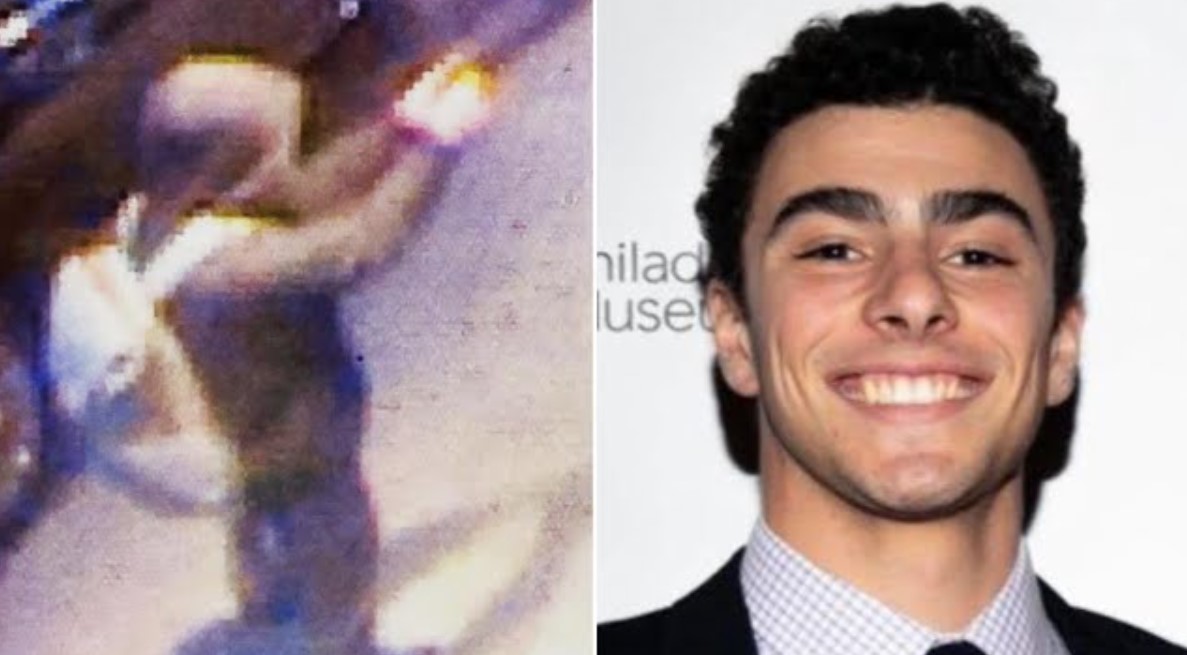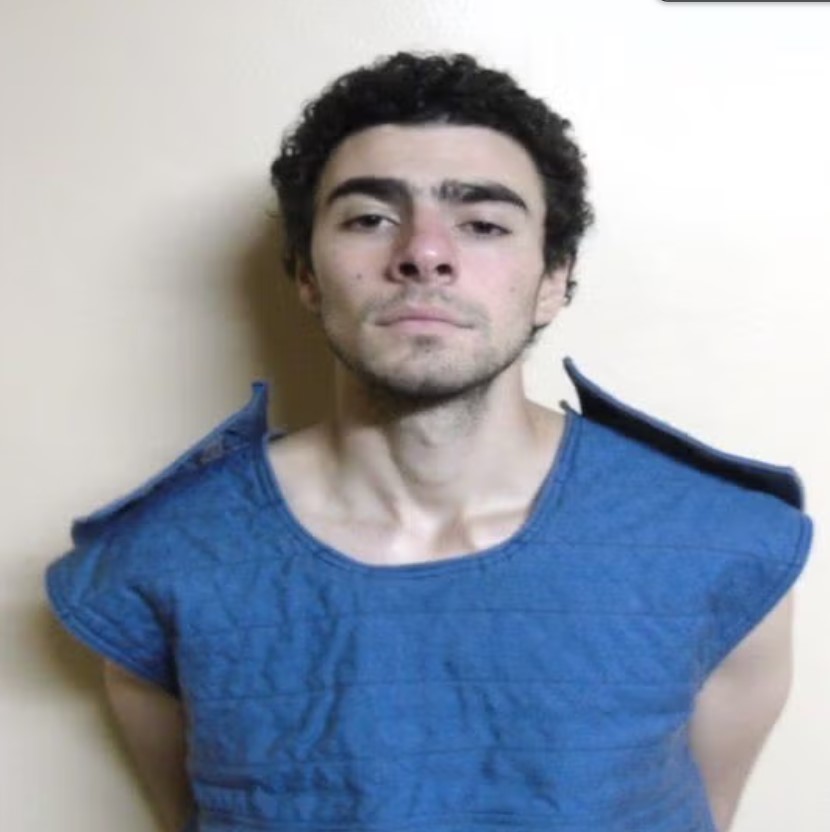In a startling turn of events, Luigi Mangione was arrested for the alleged murder of UnitedHealthcare CEO Brian Thompson, sparking widespread media frenzy and public intrigue. Shortly after his arrest, a mysterious video surfaced on YouTube that intensified the drama surrounding the case. The video, which appeared under a channel bearing Mangione’s name and image, was titled “The Truth.” Its content and timing published mere hours after Mangione was taken into custody raised eyebrows and questions about its authenticity and origin.


The video began ominously with a countdown timer and a chilling message: “If you see this, I’m already under arrest.” This introduction set a foreboding tone, suggesting that Mangione had anticipated his capture and had prepared a message for the public. As viewers watched, the screen flashed with the word “Soon…” followed by the date “Dec 11th,” hinting at some significant future revelation or event. The video concluded with a cryptic farewell: “All is scheduled, be patient. Bye for now.”
This cryptic video was not only puzzling but also went viral, catching the attention of major news outlets and social media platforms worldwide. The subsequent deletion of the video from YouTube only added to the mystery and speculation surrounding its contents and intentions. Was this a planned message by Mangione, a desperate bid for public sympathy, or perhaps a more sinister distraction orchestrated by unknown parties? These questions formed the core of the ensuing media coverage and public discourse, highlighting the complex interplay between crime, media, and digital manipulation in today’s interconnected world.
Discovery of the Video
A video titled “The Truth” surfaced on YouTube shortly after the arrest of Luigi Mangione, who was implicated in the high-profile murder of UnitedHealthcare CEO Brian Thompson. This video opened with a stark black background overlaid with a digital countdown timer, creating an atmosphere of anticipation and urgency. The initial message, “If you see this, I’m already under arrest,” appeared on screen, setting a grave tone for the revelations to follow.
As the countdown reached its end, the screen transitioned to display a single cryptic word: “Soon…” This was quickly followed by the display of a specific date, “Dec 11th,” which flashed briefly before the video concluded with another enigmatic statement: “All is scheduled, be patient. Bye for now.” The use of these elements the countdown, the ominous messages, and the specific date suggested a planned sequence of events or disclosures that were yet to unfold. The deliberate pacing and sparse, impactful use of text in the video served to maximize the dramatic effect and retain viewer attention.
The video’s content, with its foreboding messages and lack of detailed explanation, immediately sparked curiosity and concern among viewers. The production values, though simple, were effectively used to create a sense of intrigue and impending drama. This mysterious presentation led to rampant speculation about what Mangione might have intended to convey through this video and what events might transpire on the indicated date of December 11th.
Viral Spread and Initial Theories
Following its upload, “The Truth” quickly went viral, propelled by the notoriety of Mangione’s arrest and the cryptic nature of the video itself. Major news outlets and social media platforms picked up the story, each adding layers of speculation and analysis, which only increased public interest and the video’s circulation. The virality was fueled by the timing of its release just hours after Mangione’s arrest and the mysterious content that seemed like a premeditated message from the suspect himself.


Initially, there was widespread conjecture that Mangione had used YouTube’s premiere function to schedule the video in advance. This feature allows content creators to set a specific date and time for a video to be publicly broadcasted, enabling them to engage with viewers as if in real-time. The prevailing theory suggested that Mangione might have planned the release of this video as part of a larger strategy or narrative he wanted to communicate, potentially as a means to control the narrative or send a message post-arrest.
Discussion among digital forensics experts and media analysts focused on whether it was possible for Mangione to have orchestrated the timing of the video’s release from behind bars. This led to investigations into the exact timing of the video’s upload and premiere. Questions arose about the capabilities of individuals in custody to access digital platforms and manage content remotely. The intrigue around these logistical aspects added another layer of mystery to the already enigmatic situation, compelling the audience to tune in for any developments or explanations regarding the true origin and purpose of “The Truth.”
This combination of immediate viral spread and speculative theories about the video’s timing and intent highlighted the powerful intersection of digital media capabilities and high-profile criminal cases. It underscored the evolving nature of how information is shared and consumed in the digital age, particularly in scenarios involving public figures and criminal allegations.
Debunking the Video
In the days following the viral spread of “The Truth,” a comprehensive forensic analysis was conducted by The Intercept to assess the authenticity of the video linked to Luigi Mangione. The investigation aimed to determine whether Mangione himself could have been responsible for uploading the video from detention, or if another party was involved.


The forensic team utilized a range of digital analysis tools, including ExifTool and MediaInfo, which are standard in examining the metadata of digital files. These tools allowed the analysts to scrutinize the video’s encoding details, timestamps, and other embedded data that could reveal the true timeline of the video’s creation and upload.
ExifTool helped in extracting data related to the video’s creation and modification times. MediaInfo provided insights into the encoding specifications, such as the codec used, the exact times the video file was handled, and any alterations that might have been made shortly before the upload. The analysis showed that the video was last modified and encoded at 2:33 p.m. ET on December 9, 2024 merely two minutes before its scheduled premiere on YouTube.
These findings were critical because they directly contradicted the theory that Mangione, who had been in custody since 9:15 a.m. ET that same day, could have uploaded the video himself. The timestamps indicated that the video was uploaded to YouTube minutes before its premiere, ruling out the possibility that it was scheduled in advance by Mangione. This conclusion suggested that either someone else had access to Mangione’s account or that the video was part of a planned hoax not directly orchestrated by him from detention.
YouTube Channel Analysis
Further scrutiny was directed towards the YouTube channel named “PepMangione,” which hosted the controversial video. This channel was not newly created; it had been established on January 20, 2024, almost a year before the alleged crime involving Mangione. This timeline raised questions about the original purpose of the channel and its connection to Mangione’s other known social media activities, particularly his Twitter account, which shared the same username.
The analysis of the channel’s metadata revealed significant changes around the time of Mangione’s arrest. The Intercept reported that the channel’s name and associated handle were altered following widespread media coverage of the arrest, indicating an attempt to link the channel more closely with Mangione post-arrest. These modifications could have been made by Mangione or associates to align his digital presence with ongoing events, or by other individuals aiming to exploit the situation.
A spokesperson from YouTube commented in an updated Newsweek article that the channel’s metadata had indeed been updated post-arrest. These updates included changes to the channel name and handle, reflecting a strategic shift in the channel’s branding or ownership during a highly sensitive period. The alterations in the channel’s metadata following the arrest added another layer of complexity to the case, suggesting a possibly coordinated effort to manipulate public perception.
This analysis not only highlighted the ease with which digital identities and content can be manipulated on platforms like YouTube but also underscored the challenges faced by investigators in tracing digital actions back to real-world individuals. The PepMangione YouTube channel became a focal point in the broader discussion about digital evidence and its role in modern criminal investigations, illustrating how online platforms can become battlegrounds for narrative control in high-stakes legal scenarios.
Broader Implications
The curious case of Luigi Mangione and the viral video titled “The Truth” extends beyond YouTube, touching various aspects of digital communication and media manipulation. Similar suspicious activities were observed on other social platforms such as BlueSky and Telegram, where accounts bearing the name PepMangione popped up shortly after Mangione’s arrest. These platforms, known for their encrypted messaging and privacy-focused features, became grounds for spreading potentially misleading information and rumors surrounding the case.
The emergence of these accounts raises critical questions about the ease with which digital identities can be created and manipulated. It underscores a growing trend in high-profile criminal cases where individuals or groups use digital platforms to influence public opinion or sway legal outcomes. The rapid spread of information and misinformation through these channels can complicate legal proceedings, influence public sentiment, and challenge the integrity of news dissemination.
Moreover, the Mangione case highlights the broader impact of digital footprints in criminal investigations. Law enforcement agencies increasingly rely on digital evidence to build cases, but the authenticity and origin of such evidence can be extraordinarily complex to ascertain. The ability of digital platforms to preserve, alter, or delete data complicates these efforts further.
Media manipulation, whether through the creation of fake videos, the strategic release of information, or the misuse of digital platforms, poses significant challenges. It not only affects the parties directly involved in the case but also has wider implications for public trust and the consumption of media. The ease with which digital content can be altered and presented as authentic calls for a more critical and discerning approach to media consumption by the public.
The Luigi Mangione case, marked by the release of the cryptic video “The Truth,” has brought to light several key findings about the intersection of crime, media, and technology. Forensic analysis by The Intercept debunked the authenticity of the video, proving it could not have been uploaded by Mangione himself due to the precise timestamps of its encoding and premiere. Further investigation into the YouTube channel “PepMangione” revealed alterations to its metadata post-arrest, suggesting manipulation or misuse of digital profiles.
These findings underscore the complexity of managing digital evidence and the ease with which it can be manipulated. The case exemplifies how digital platforms can be used to influence public opinion and the judicial process, posing significant challenges to the authenticity and reliability of information online.
Reflecting on the Mangione case and similar instances of media manipulation in other high-profile scenarios, it becomes evident that the digital age offers both profound tools for information sharing and significant opportunities for misinformation. This duality demands a vigilant and sophisticated approach to media literacy and digital consumption.
As we move forward, the challenges of managing misinformation will likely intensify, necessitating stronger measures from both digital platforms and regulatory bodies to safeguard the integrity of information. The public, too, must be more critical of digital content, understanding the potential for manipulation and the impact it can have on individual perceptions and broader societal issues. In sum, the Mangione case serves as a compelling call to action for all stakeholders in the digital realm to foster a more informed and discerning public discourse.
Daily Hot News –



